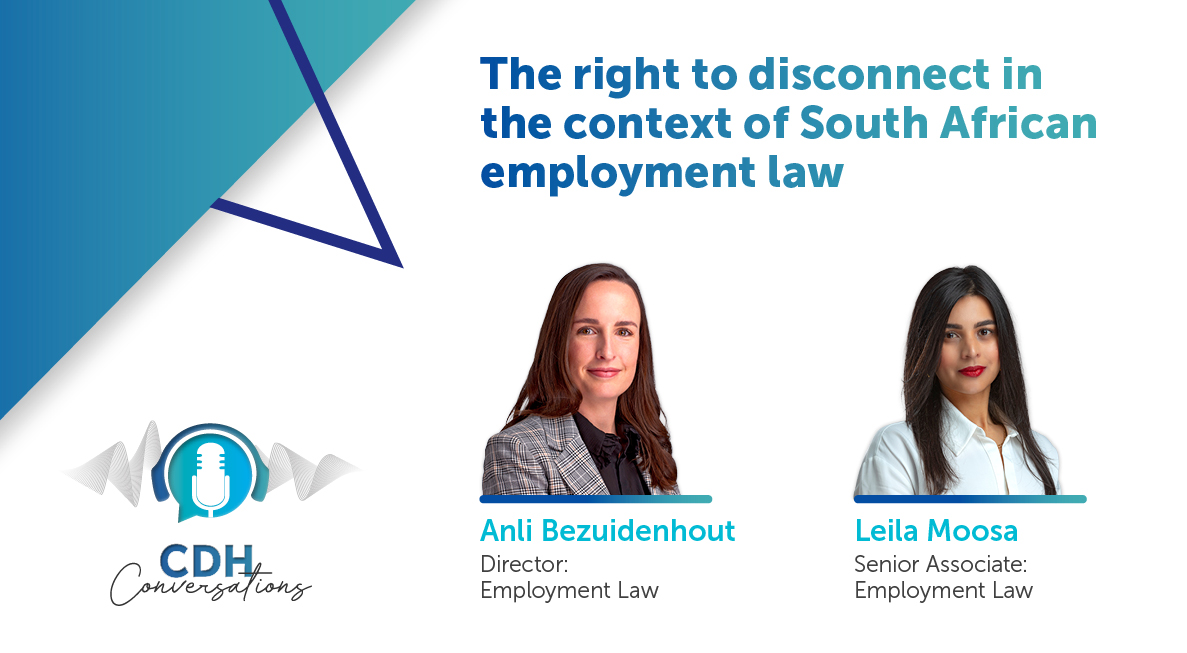When AI lies: The legal minefield of artificial intelligence and defamation
At a glance
- In Walters v OpenAI, L.L.C, No. 23-13843 (11th Cir. 2024), Walters sued OpenAI for defamation, arguing that a false statement ChatGPT made about him with regard to embezzlement constituted publication of defamatory material.
- For legal systems, the case reveals the urgent need to develop coherent frameworks for AI liability.
- The current principles applicable to defamation claims may suffice for now, but as AI capabilities expand, the challenge for legal systems everywhere is finding the balance that protects both technological progress and human dignity in our increasingly AI-mediated world.
The case began innocuously enough: a journalist asked ChatGPT to summarise a legal complaint against the Attorney General of the state of Washington, laid by the Second Amendment Foundation, for which Walters was a spokesperson (the Ferguson complaint). For those who may still be uncertain of how ChatGPT works, the court provided a helpful summary:
“ChatGPT is a tool that allows users to access a ‘large language model’ or ‘LLM’ that is ‘trained on vast amounts of data’ to generate new text in response to a user’s prompt ‘by predicting what words will come next’, and ‘due to their generative nature, all of the major LLMs that are currently available to the public’ are capable of ‘generat[ing] information contradicting the source material,’ sometimes referred to as ‘hallucinations’.”
While ChatGPT initially summarised extracts of the complaint correctly, its subsequent summary of information available in an internet link (URL) to the complaint contained a serious allegation – ChatGPT provided a new, incorrect summary of the Ferguson complaint, claiming that Walters had embezzled funds from a gun rights organisation, a statement with no basis in reality. It was a classic AI hallucination, but one which could have seriously impacted Walters’ reputation if believed.
Fortunately, the journalist researched the Ferguson complaint further and quickly established that the ChatGPT output was not true and no further publication of the fabricated allegations ensued.
The Georgia precedent
In Walters v OpenAI, L.L.C, No. 23-A-04860-2 (Ga. Super. Ct. 2025) Walters sued OpenAI for defamation, arguing that ChatGPT’s false statement about embezzlement constituted publication of defamatory material. The Superior Court of Gwinnett County, Georgia, had to grapple with a novel question: can an AI developer be held liable when its technology generates defamatory content?
The case presented several unprecedented legal issues. Could AI-generated hallucinations be attributed to OpenAI as intentional or negligent publication? Do traditional defamation standards applicable in the US – requiring intent, negligence or actual malice – apply to algorithmic outputs that are inherently unpredictable? And, crucially, in an age where AI companies plaster their products with warnings about potential inaccuracies, can users reasonably rely on AI-generated statements as fact?
The Georgia court ultimately granted summary judgment in favour of OpenAI. The decision hinged on several key findings, namely that (i) ChatGPT’s output was not defamatory as a matter of law; (ii) Walters could not prove negligence or actual malice on the part of OpenAI; and (iii) he suffered no quantifiable damages. Perhaps most significantly, the court determined that no reasonable reader of the ChatGPT output, who had experience with the AI tool and who would have received repeated disclaimers which warned that mistaken output was a real possibility, would interpret ChatGPT’s output as stating “actual facts”.
The court emphasised OpenAI’s proactive steps to reduce errors and provide robust warnings about AI hallucinations, which were included in its terms of use. These safeguards, combined with the probabilistic nature of AI technology, created a legal shield that protected the company from liability.
The South African perspective
How might this case have unfolded in South Africa, where the principles of defamation differ from those applicable in the US?
South African defamation law requires the wrongful and intentional publication of a defamatory statement pertaining to a person. To succeed with a defamation claim, a plaintiff has to prove the following:
- a defamatory statement;
- its publication;
- that the statement was made of and concerning the plaintiff; and
- that the statement has a defamatory meaning to a reasonable reader.
Once a plaintiff has proved the above elements, it is presumed that the publication is unlawful and that the defendant acted with the intention to defame the plaintiff. The onus then shifts to the defendant to rebut these presumptions of unlawfulness.
When considering the defences that can be raised by defendants, i.e. recognised grounds for lawful justification, a distinction can be drawn between media defendants and other defendants, in that the media can also rely on the so-called reasonable publication defence, established in the landmark case of National Media Ltd v Bogoshi 1996 (3) SA 78. The reasonable publication defence entails that a media defendant will not be held liable for the publication of false and defamatory statements, if in publishing such statements, it did not act negligently and the publication of the defamatory material was reasonable considering all the circumstances.
With this in mind, had the journalist published ChatGPT’s defamatory fabrication about Walters, he would likely have been held liable under South African law for his failure to take reasonable steps to verify the accuracy of the information. Not only was the defamatory content not true, but the journalist would not have acted reasonably in publishing the content. The court would have considered the circumstances, including the fact that the journalist had first-hand experience of hallucinations by AI tools, as well as the numerous disclaimers that would have come to the journalist’s attention, and determined that the journalist did not act reasonably in publishing the defamatory content.
The more intriguing question is whether defamatory AI hallucinations can and should be attributed to the AI developer for purposes of defamation.
The probabilistic nature of AI algorithms should make it rather easy for an AI developer to prove that it had no intention to defame a person. The absence of human intervention in AI output complicates any defamation claim brought by someone based on AI hallucinations. What a court might have to consider is whether the AI developer acted reasonably in designing, deploying or providing warnings about potential hallucinations. If clear disclaimers and reasonable safeguards were implemented, liability on the side of the AI developer would be unlikely. However, if a plaintiff could demonstrate that the developer failed to implement reasonable protections or ignored foreseeable risks, liability might arise.
Broader implications
All of the above is, of course, speculative.
Were a similar case to come before a South African court, the court could decide to deal with the matter in terms of the current principles of defamation law, or it could adopt a completely new standard or take a more unexpected approach. The Walters case illuminates a fundamental challenge facing legal systems worldwide: how to adapt centuries-old defamation principles to revolutionary technology that operates in ways human publishers never could.
Defamation law principles assume human agency: someone publishes or acts negligently. AI systems operate probabilistically, generating outputs based on statistical patterns rather than intention. This creates unprecedented questions about foreseeability and responsibility in the chain from AI development to publication. The Walters case demonstrates that robust warnings and reasonable safeguards can protect AI developers from liability, but it also highlights the growing responsibility of users to verify AI-generated information.
The legal uncertainty extends beyond defamation. If AI companies can shield themselves behind disclaimers and the inherent unpredictability of their technology, would there be sufficient incentives to improve accuracy? Conversely, if courts impose strict liability, will it stifle AI development and limit beneficial applications?
For legal systems, the case reveals the urgent need to develop coherent frameworks for AI liability. The current principles applicable to defamation claims may suffice for now, but as AI capabilities expand, the challenge for legal systems everywhere is finding the balance that protects both technological progress and human dignity in our increasingly AI-mediated world.
Moving forward, stakeholders across the AI ecosystem – from developers implementing robust safeguards to legal practitioners advising clients on emerging risks – should collaborate to establish best practices while courts and legislators work to clarify liability standards, especially as AI becomes increasingly sophisticated and ubiquitous. The challenge lies not in prescriptive solutions, but in fostering responsible innovation within an evolving legal landscape.
The information and material published on this website is provided for general purposes only and does not constitute legal advice. We make every effort to ensure that the content is updated regularly and to offer the most current and accurate information. Please consult one of our lawyers on any specific legal problem or matter. We accept no responsibility for any loss or damage, whether direct or consequential, which may arise from reliance on the information contained in these pages. Please refer to our full terms and conditions. Copyright © 2025 Cliffe Dekker Hofmeyr. All rights reserved. For permission to reproduce an article or publication, please contact us cliffedekkerhofmeyr@cdhlegal.com.
Subscribe
We support our clients’ strategic and operational needs by offering innovative, integrated and high quality thought leadership. To stay up to date on the latest legal developments that may potentially impact your business, subscribe to our alerts, seminar and webinar invitations.
Subscribe




